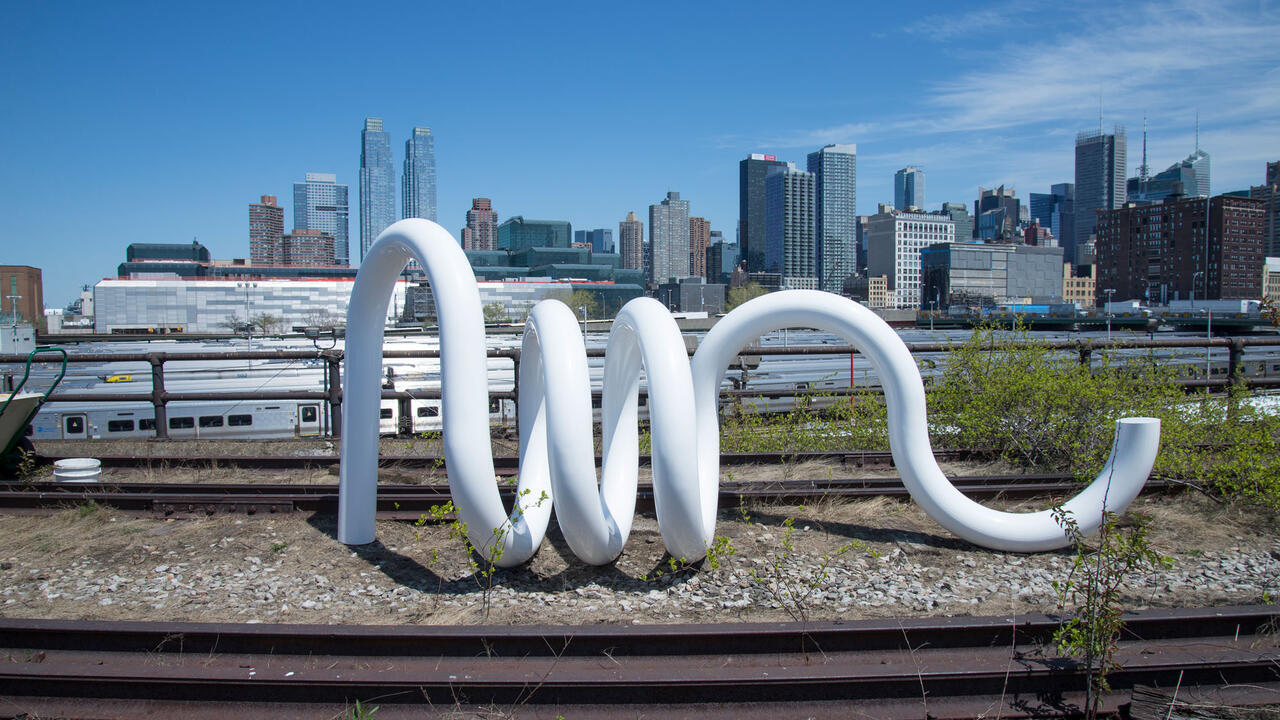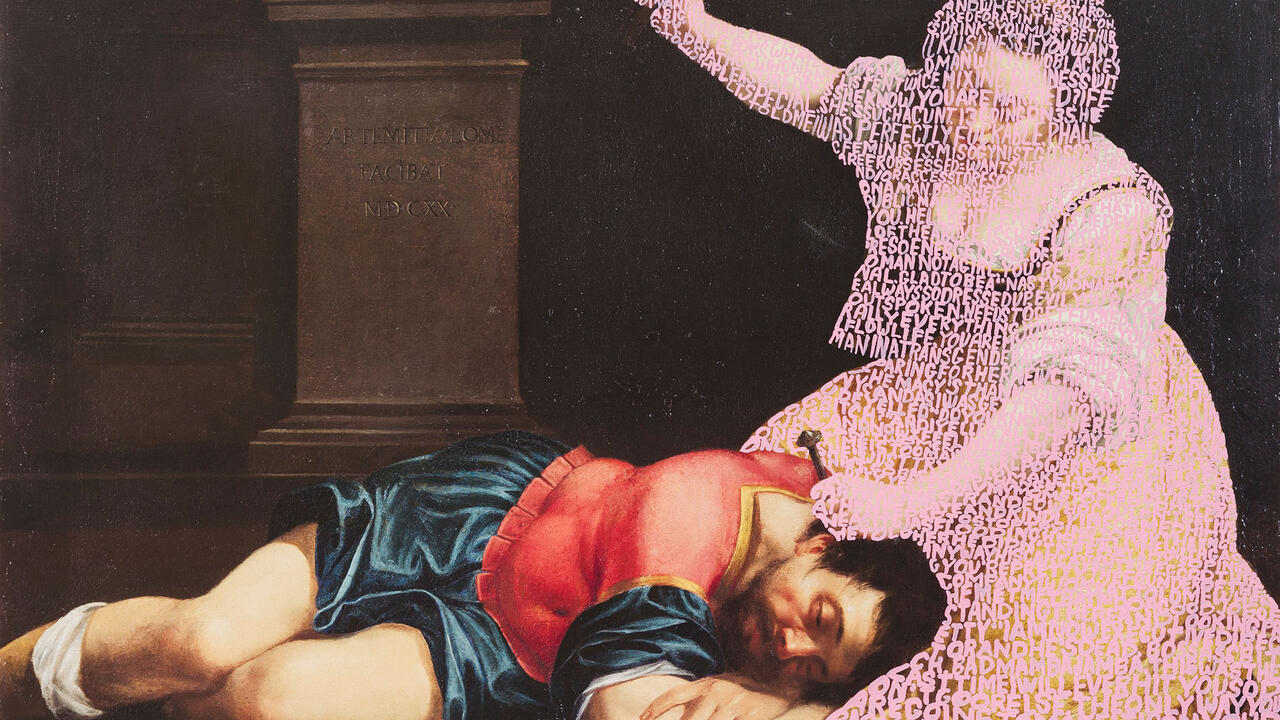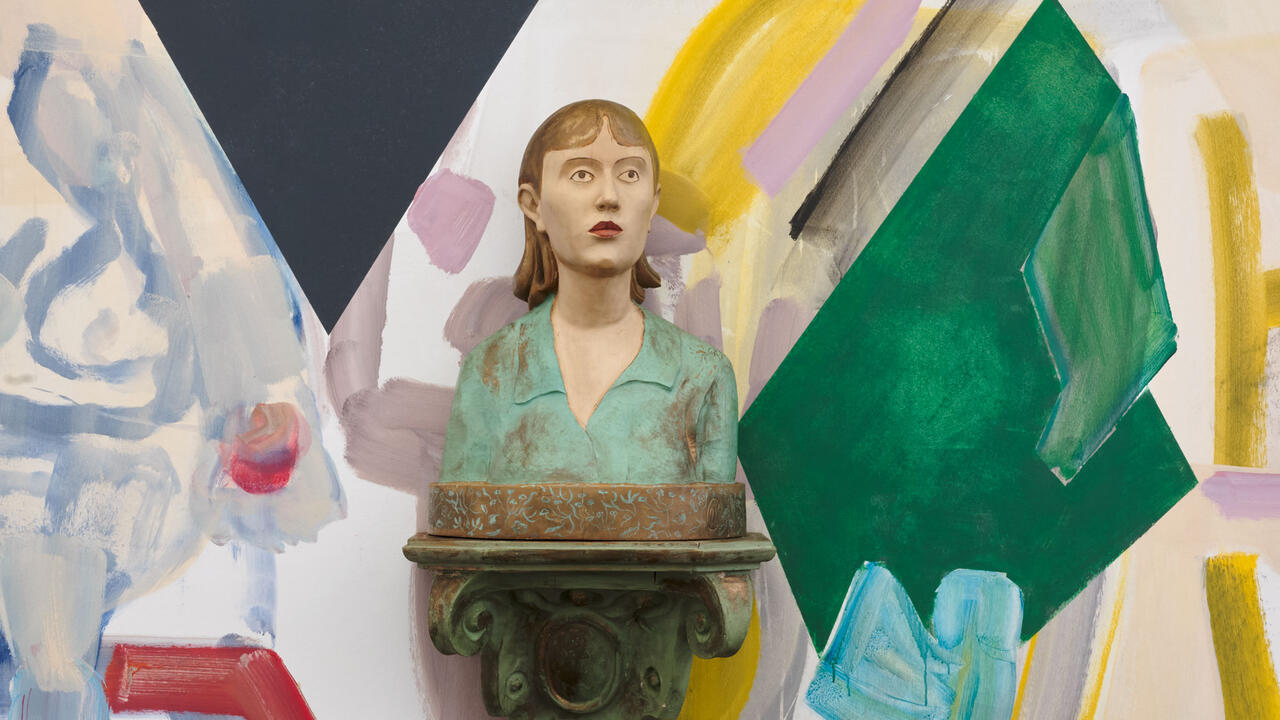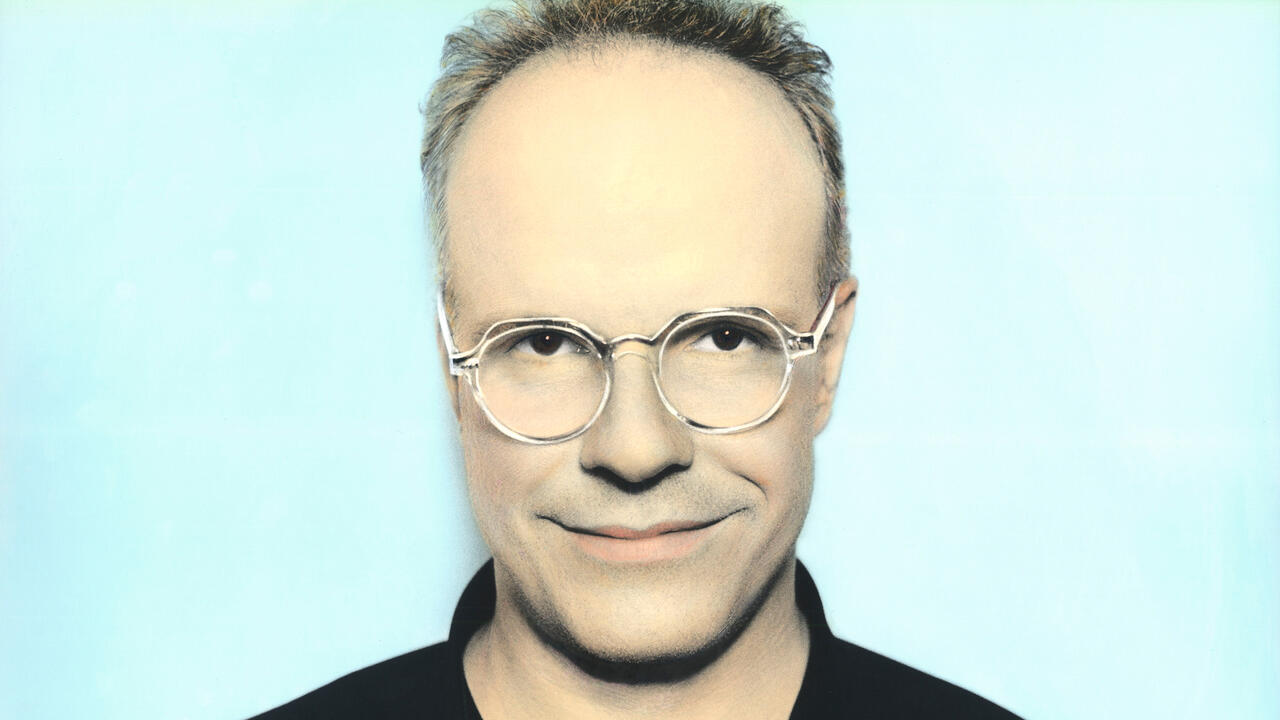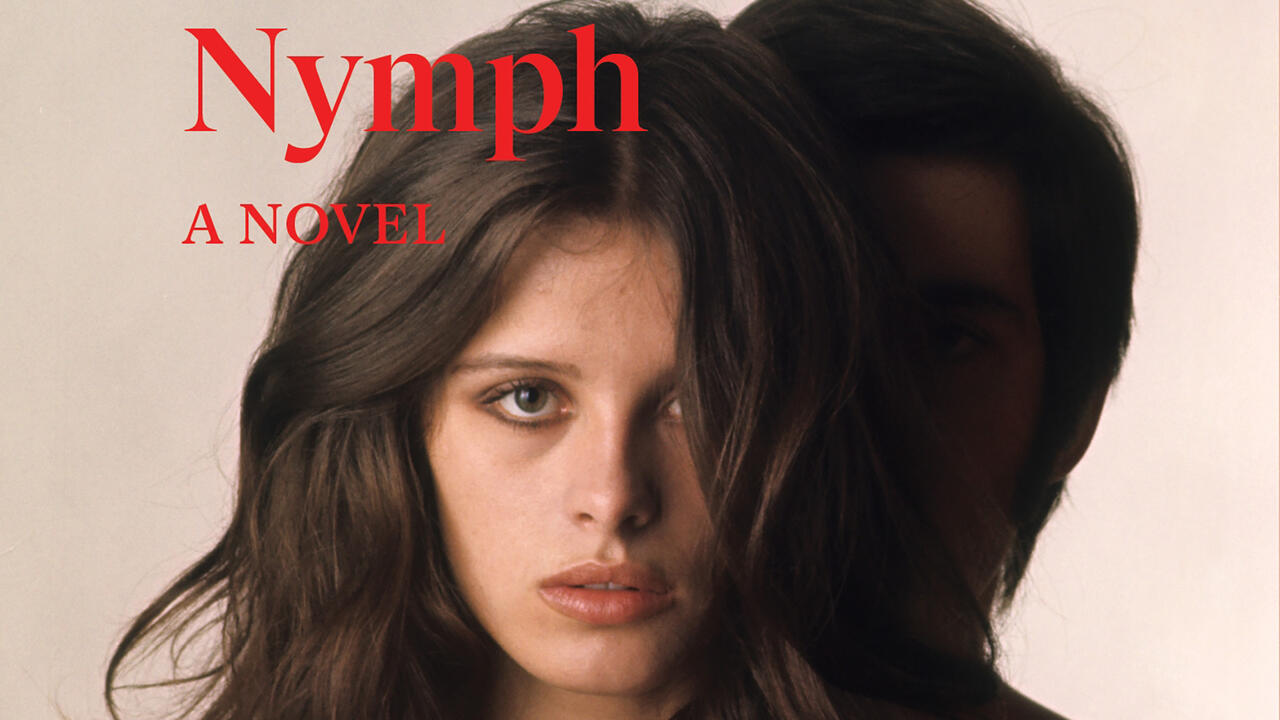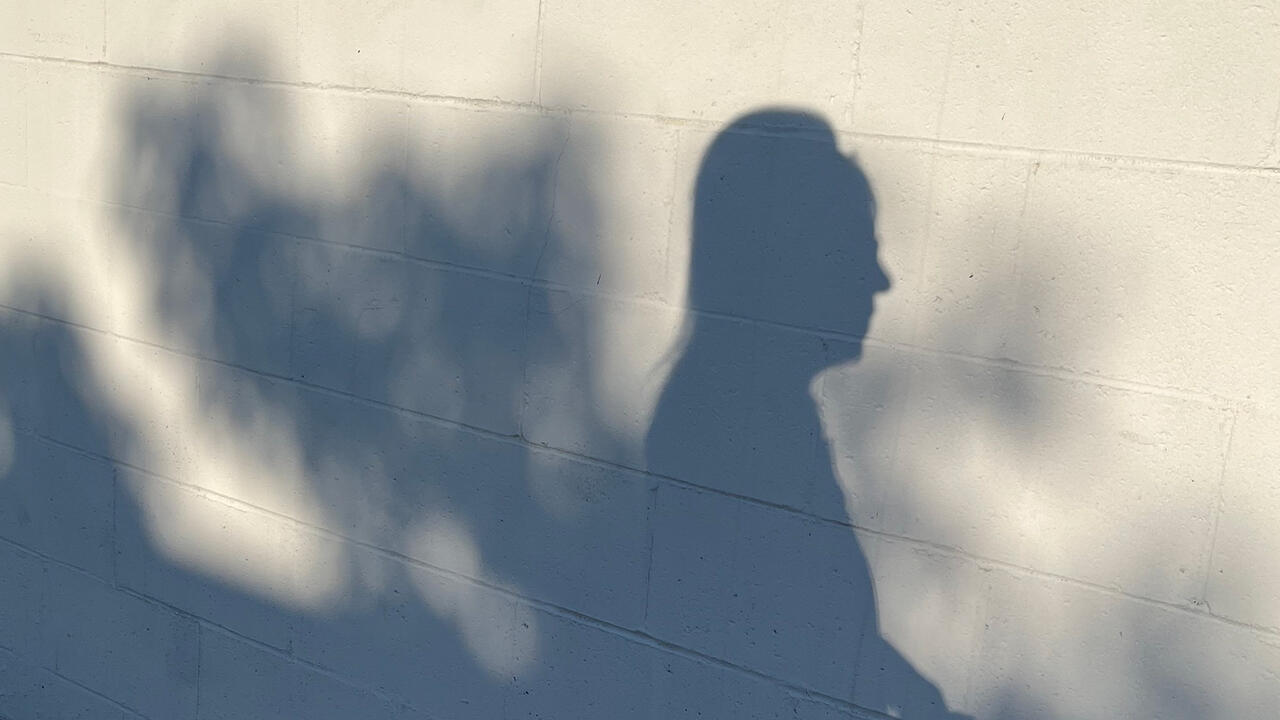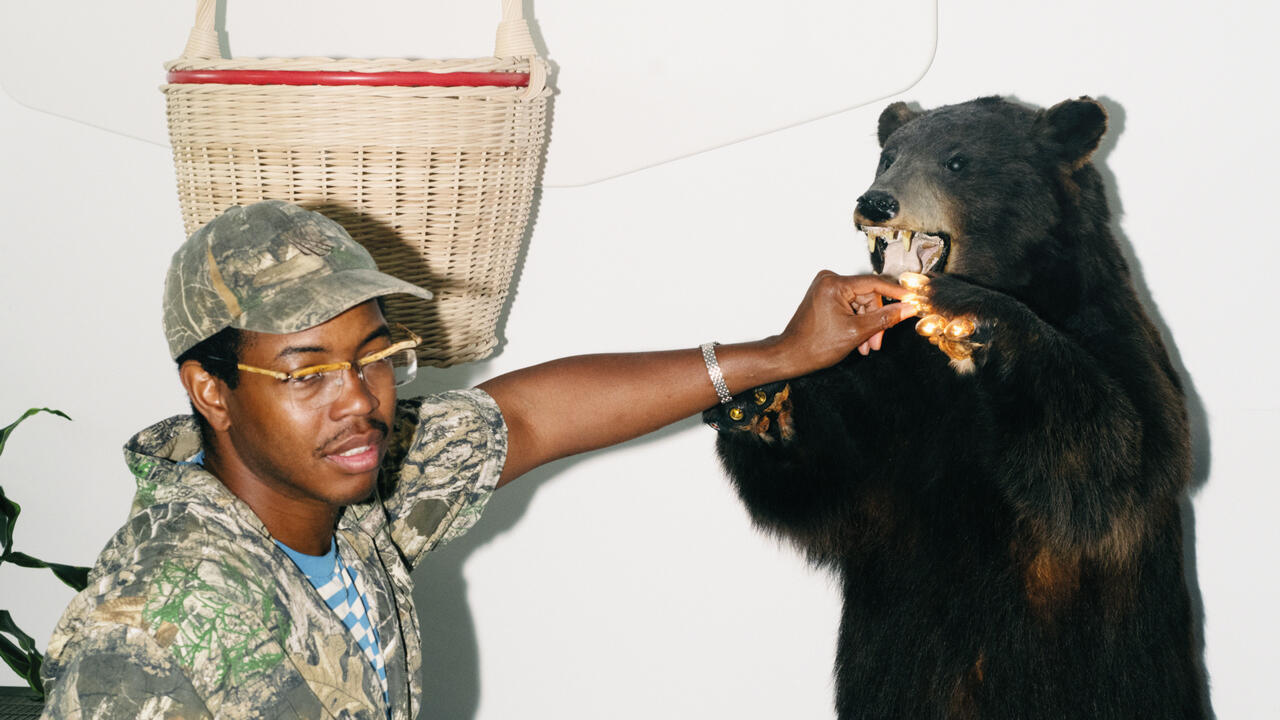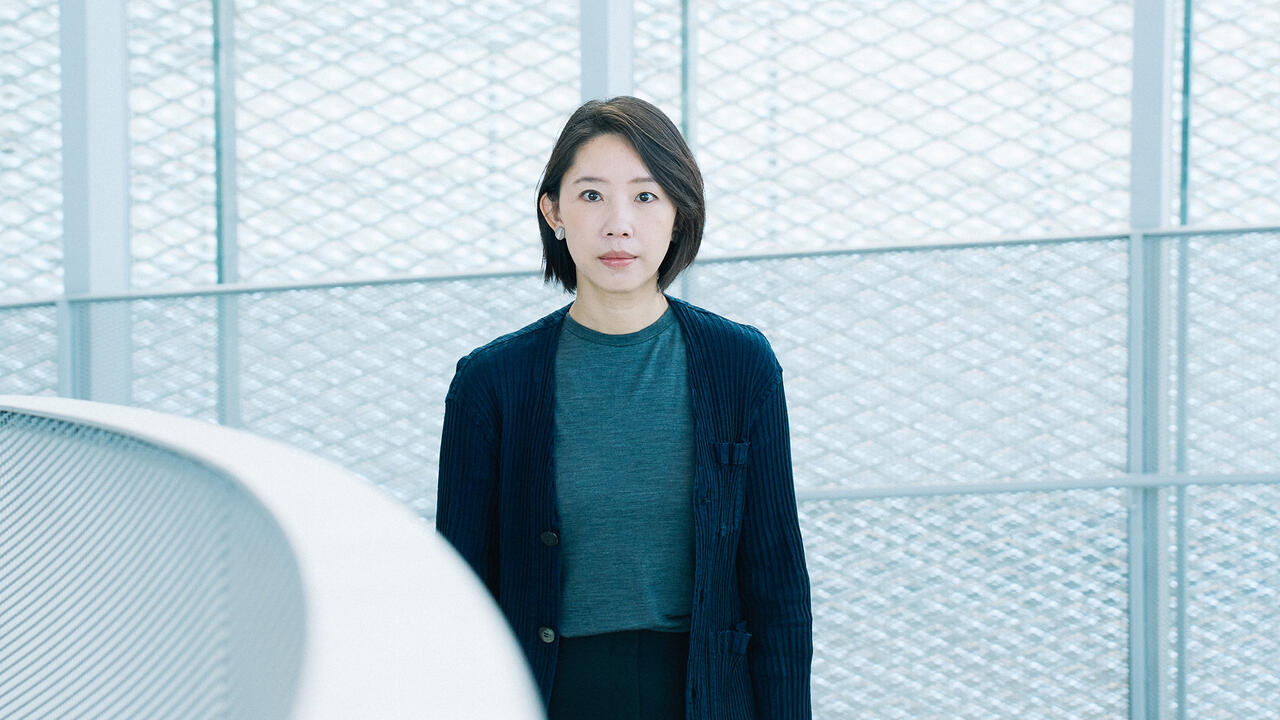Ordinary madness
An interview with Albert Oehlen
An interview with Albert Oehlen

f You once said that the distinction between right and wrong is an important criterion in painting. Is your work about making decisions and laying down rules?
Albert Oehlen Following a self-imposed set of guidelines certainly gives you more momentum. Forbidding yourself certain things, believing in rules, is a good state to be in. That's the way to develop as an artist, by giving yourself instructions what to do next. One rule could be: don't stick anything on to the picture surface. There are examples from art history where you can say: 'See, if he hadn't done that, it would have been better.' [laughs] But of course, everything you feel you should reject represents a form of temptation. When you view a work of art, you notice that things you had written off can hold surprises after all. A few years ago, I might have said I would never have any truck with Body art, and then someone comes along who does it well, contrary to all your expectations. If you want to surprise yourself in painting, the obvious choice is to take things that you would normally not bother with and give them a try.
f How do you formulate these rules?
AO They are all about discipline - like new year's resolutions. One of mine was, 'Paint slower'. And I did so, over a period of years: slower and slower and slower. Originally my pictures were very impulsive - that was in the context of Bad Painting. I used to think, the easiest thing is to paint fast, and the appropriate result will automatically follow. Then it occurred to me: why not paint slowly? [laughs] It sounds awfully banal but it had a great many consequences.
f How else have these rules affected your work?
AO Looking back at how I thought about my work in the 1980s, I can say that there was a first phase of constant experimentation - the dinosaur pictures and then the mirror pictures all belong to that time. In the second phase things got abstract and non-figurative; I tried to think clearly, excluding much of what I saw as 'wrong'. These pictures were untitled. Then, during a conversation with the writer Rainald Goetz about eight years ago, it became obvious that I had convinced myself I was producing work that was clear and precise. He told me that believing yourself to have achieved clarity was a stupid state to be in. The tone of his comments was along the lines of 'More is more' - that you shouldn't abandon content. So, as a form of therapy, I resolved to begin working with content again. That's when I had the idea for my computer collage posters - they give plenty of scope for working with content.
f The collages use the kind of stylistic elements you might find in the design of a snack bar menu: wild combinations of shaded typefaces and 3D components - a kind of desktop publishing Surrealism with a preference for aesthetic collisions.
AO Yes but I don't just allude to that design process - I actually go through it. When I started making the computer collages, it was all extremely primitive - that was when I made the black and white scrawly drawings. I didn't even know how to use Photoshop. I saw it more as a situation where I could experiment freely without having to prove my skill. At the time I felt very good doing it - and I still do - because I had the feeling that no one else was working with this kind of total typographical anarchy and chaotic content. I knew I could do what I wanted. The pizza box design aesthetic encouraged me.
f What is this anarchy directed against?
AO If anything, it makes fun of how seriously people take the kind of thing Neville Brody and others started in the 1980s. The aesthetic of modern magazines or flyers is often rather strained. Although it is obviously good work, it could have been completely different.
f Does your own work feign ignorance of aesthetic rules?
AO It is more a question of adopting a state of stupidity. What I'm doing is actually grotesque, not least in terms of content: these images make all sorts of claims and demands. So it makes sense for the graphic world it inhabits to be stupid too. But it doesn't make fun of other people's clumsiness. Making fun of something is always a dubious business - it can easily backfire. When I do come close to it, though, it is more in the sense of putting on a hair shirt. Martin Kippenberger did the same thing. Instead of defaming things in an ironic way, we tried them out ourselves. Bad Painting isn't about making fun of people who can't paint.
f Is this a movement towards an everyday aesthetic, as in the work of Sigmar Polke, who was your teacher?
AO If you consider the introduction of popular elements as the key to the history of progress in art over the past century, then that is certainly the sphere of ideas that I have focused on. In other words: profanity - working against the spectre of a cerebrally élitist High Art whose sacred fragrance is wafted at the viewer across the divide. This is nothing special. It's been going on for over a century. The process of artists taking something profane and turning it into the unexpected began a long time ago, in the motifs of Jean-François Millet or Gustave Courbet, and soon Pablo Picasso was sticking guitars on to his canvases. Up until the work of Joseph Beuys, people were still shocked by the use of shabby material in an expensive work of art. I think what matters is what one makes of things - I believe my treatment of the material elevates it. What allows people to find beauty in it is an understanding of it - someone saying: 'Wow, I wasn't expecting that, I like it'. My own response to art operates in that way. In contrast, something I'm now seeing that astonishes me is artists using the Sublime: when Günther Förg photographs a Mies van der Rohe building, I'm knocked out by it; I couldn't manage that. Or when Andreas Gursky photographs a glacier - already one of the most beautiful sights this planet has to offer - with the most advanced technology. That is the opposite of what I do.
f You mean he creates Sublime works from something that is already Sublime?
AO Exactly, I think that's incredible. It would never have occurred to me as a possible approach. [laughs] It makes me jealous.
f What made you choose painting as your medium?
AO What sparked my interest was a desire to be involved with the medium that quintessentially represented High Art but which at the time, in the late 1970s, was coming under fierce attack. Added to which, there was a general feeling of massive potential in painting, since so little was happening in that field. It was more or less a black hole. And it coincided with Punk, the feeling that one could use rudimentary means to revitalize the whole thing. There was no question of being intimidated by jibes like: 'Go and learn to play an instrument'.
f How do you view that ethos now?
AO I think this Punk attitude can only encourage young people to do things they might otherwise have lacked the confidence for. Beyond that, it soon becomes ridiculous. What you actually end up knowing or being able to do makes no odds. You have to acquire the skill you want to possess, whatever it may be; it doesn't have to be painting technique. You just have to succeed at what you decide to do.
f What about the Punk attitude to life in general?
AO There were the 'Neue Wilden', who really did paint wildly and captured the feeling of the moment in emotional terms, like Ter Hell or Salome. We were much more devious than that. We mixed up techniques, introduced things those people wouldn't have used and played other tricks. At first, we spent many years not caring what our work looked like or how it was classified. We weren't worried whether it was coherent and comprehensible. At the moment I tend to see it as a continuation of Surrealism.
f Why is that?
AO Salvador Dalí, for example, manipulated his images, deliberately provoked. I would say he probably cobbled his 'dream' images together - in some cases purely to startle André Breton. That is precisely the aspect I mean: the fact that there is a deception going on. As I understand it, the Surrealists wanted to redefine every aspect of the relationship between artist, artwork and viewer. To this end, their experiments called everything into question. I think the key to Surrealism was the introduction of new parameters to artistic production.
f You also frequently refer to an obscure American painter ...
AO ... yes, John Graham. A Russian exile, an intellectual, esoteric and conman, who claimed to belong to the Tsar's family. He did absurd experiments. I don't think the value of his art can be derived from the pictures themselves. In almost all his portraits the figures are cross-eyed. That in itself is a barely comprehensible level of silliness. And then he always portrayed himself as a knight or as Genghis Khan - totally absurd pictures: a self-portrait as a cross-eyed Genghis Khan. He was a mentor and source of inspiration for artists like Jackson Pollock, Arshile Gorky and others - highly respected by everyone but his work might be complete rubbish. [laughs] Pollock was the exact opposite: someone who talked nothing but nonsense, behaved terribly and then, whether deliberately or unwittingly, no one will ever know, became a key figure simply through his work, not by virtue of what he said. He's the other extreme. I found that interesting.
f How important to you is, or was, working with other artists, such as Kippenberger?
AO Working together only makes sense in terms of egging each other on. You encourage each other to do things you would not have done otherwise. When you work alone, you tend to keep to a pattern and don't unnecessarily embark on new techniques. When there are two of you, you fool around and get carried away. Collaborations don't often give rise to much of any interest ... but perhaps each participant gets something out of it.
f What concrete form did this collaboration take?
AO Well, Kippenberger was a special case. If it had been a matter of us having an idea together - and we often did - and then him doing a picture and then me, and then him and then me again, that would have been wonderful. But Kippenberger would churn out 60 pieces overnight, straight away, so that at breakfast the next morning I knew I could forget it, since he was already on his way to the printers. [laughs] But there were also times when we lived together and worked alongside each other. That was very good. We would often look over each other's shoulder and make comments.
f Many artists build their oeuvre systematically over a long period and gradually fill in any gaps that have been left along the way, Gerhard Richter is one example ...
AO The arbitrariness was what was interesting about Richter. The most exciting moment was some time in the 1980s, when there were four or five groups of works that could only be reconciled if one followed Richter's definition, which remained unspoken. And then sadly, what you just mentioned happened: the clever-clever stuff like the mirror-as-a-painting, the focus on content with the Baader-Meinhof project, and then the stupid Atlas. All things that have diluted his image. The image of Richter, the image of his oeuvre - the colour fields, the streaks, the smudging, the candles and the abstracts - were all so great. Over them all floated the unspoken claim that all of this was the same: 'This is painting. Right. And now I've got it covered.' That was just beautiful. And then the idea of thoroughness came into play and spoilt it. I imagine you can ruin your own oeuvre by rounding it off. What was once heroically arbitrary suddenly becomes systematic and boring.
f Do you feel committed to an ethos of continual criticism in painting?
AO I used to, but not any more. I think criticism is just another form, like comedy or tragedy. Criticism is like a label on a picture. What actually happens is something else. Something that eludes control. Finally, as I see it, there is nothing but a history of formal advances, enlargements or contributions. In the end one can only say that such a person was the one who introduced such and such. That, ultimately, is form.
f The arts pages in Germany's conservative press are currently celebrating the return of figurative painting ...
AO I suspect they want to analyse pictures the way they did at university: where does this axis run and what is the relation between figures A and B? All that stuff has become useless and now they're dreaming that it might regain its validity. Disregard is painful for these people. When they are forced to recognize that you don't care, they go hopping mad. And that's something you can play with in painting, which in turn introduces an element that wasn't there before.
f How do you feel about recent painting?
AO Much of it is so safe, especially the non-figurative painting of people like Jonathan Lasker or Fiona Rae and what came after. It hits the spot for a while, and then it runs out of steam, because it is only the implementation of a preconceived method. It doesn't seem to have anything outrageous to say for itself.
f But don't you, too, formulate conceptual guidelines?
AO Yes, but I hide the conceptual background, when there is one. Of course, the temptation is always there - for everyone I suspect, but certainly for me - to believe that if only you could get the hang of it, the picture would paint itself. How lovely it would be if you were delivered from despair by an idea that you only had to follow to the letter, an idea that no one understood [laughs] and that was never revealed. In reality, though, when you work on a painting for a month, you spend 30 days standing in front of the world's ugliest picture. In my work, I'm constantly surrounded by the most dreadful pictures. It's true. What I see are unbearably ugly tatters, which are then transformed at the last moment, as if by magic, into something beautiful.









